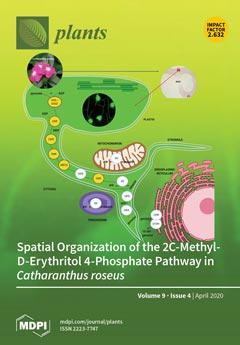Mosquitoes are important vectors of several diseases, and control of these insects is imperative for human health. Insecticides have proven useful in controlling mosquito populations, but insecticide resistance and environmental concerns are increasing. Additionally, emerging and re-emerging microbial infections are problematic. Essential oils
[...] Read more.
Mosquitoes are important vectors of several diseases, and control of these insects is imperative for human health. Insecticides have proven useful in controlling mosquito populations, but insecticide resistance and environmental concerns are increasing. Additionally, emerging and re-emerging microbial infections are problematic. Essential oils have been shown to be promising mosquito larvicidal agents as well as antimicrobial agents. In this work, the essential oils from four species of Myrtaceae (
Baeckea frutescens,
Callistemon citrinus,
Melaleuca leucadendra, and
Syzygium nervosum) growing wild in central Vietnam have been obtained by hydrodistillation and analyzed by gas chromatographic techniques. The essential oils have been screened for mosquito larvicidal activity against
Aedes aegypti,
Aedes albopictus, and
Culex quinquefasciatus, and for antimicrobial activity against
Enterococcus faecalis,
Staphylococcus aureus, and
Candida albicans.
Callistemon citrinus fruit essential oil, rich in α-pinene (35.1%), 1,8-cineole (32.4%), limonene (8.2%), and α-terpineol (5.8%) showed good larvicidal activity with 24-h LC
50 = 17.3 μg/mL against both
Ae. aegypti and
Cx. quinquefasciatus, and good antibacterial activity against
E. faecalis (minimum inhibitory concentration (MIC) = 16 μg/mL) The 48-h larvicidal activities of
M. leucadendra leaf essential oil, rich in α-eudesmol (17.6%), guaiol (10.9%), linalool (5.1%), (
E)-caryophyllene (7.0%), and bulnesol (3.6%) were particularly notable, with LC
50 of 1.4 and 1.8 μg/mL on
Ae. aegypti and
Cx. quinquefasciatus. Similarly,
M. leucadendra bark essential oil, with α-eudesmol (24.1%) and guaiol (11.3%), showed good antibacterial activity against.
E. faecalis. Both
B. frutescens and
C. citrinus leaf essential oils demonstrated anti-
Candida activities with MIC values of 16 μg/mL. The results of this investigation suggest that essential oils derived from the Myrtaceae may serve as “green” alternatives for the control of mosquitoes and/or complementary antimicrobial agents.
Full article






